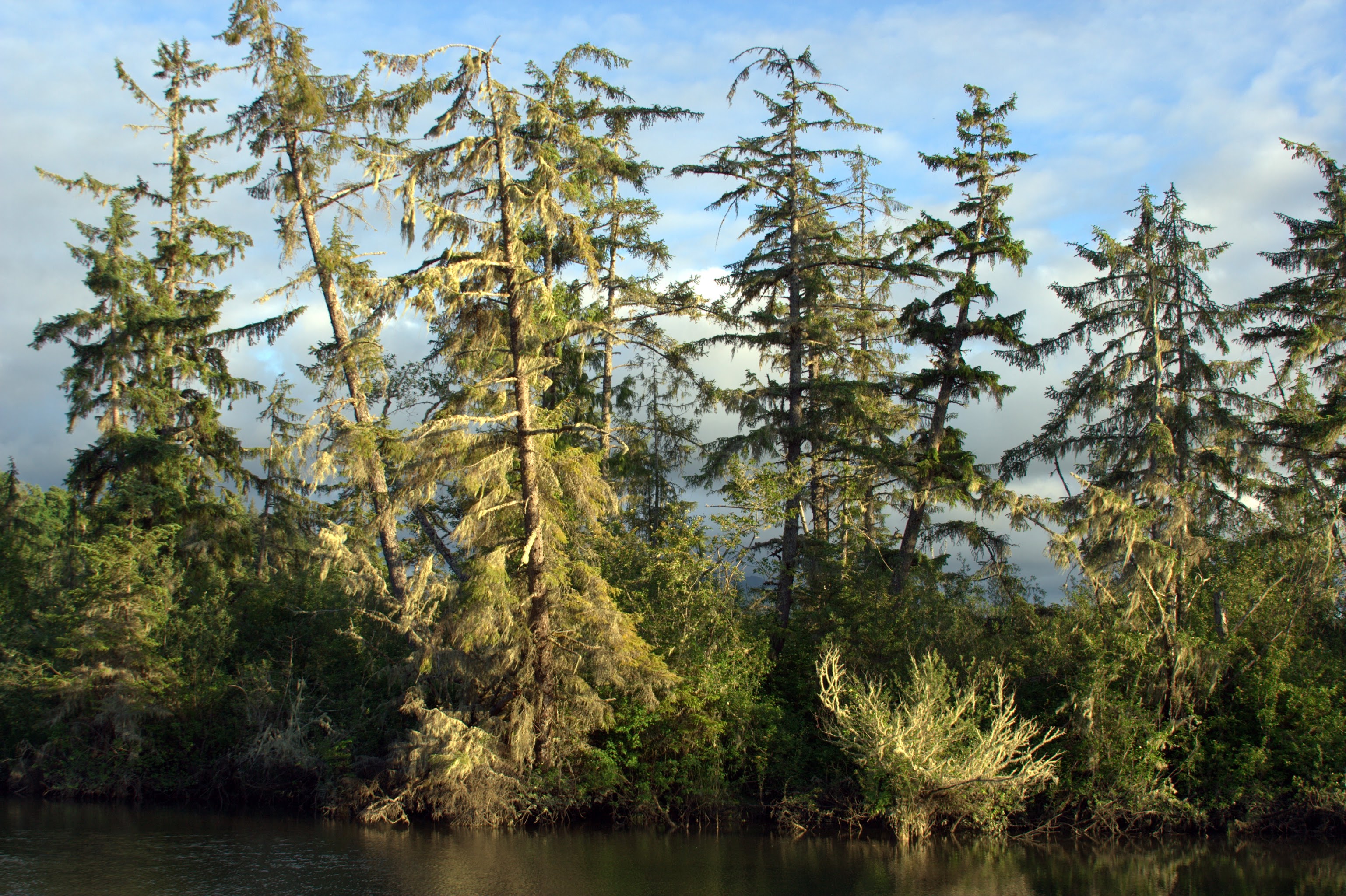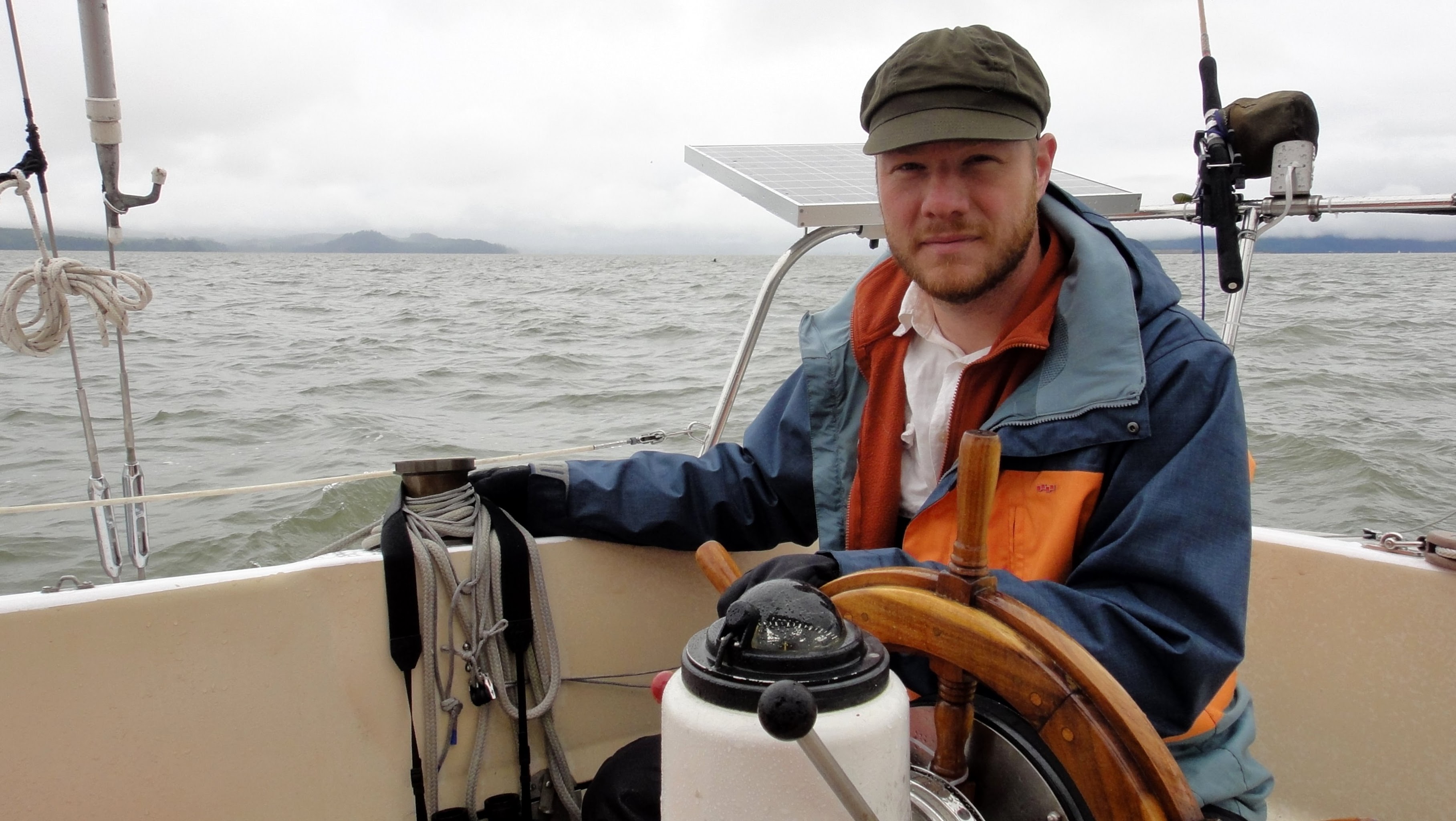Kristin is studying for her exam, and my goals for the trip down the river are two-fold: build skills for our trip north and provide calm safe uninterrupted time for studying. I am not sure how well I have done thus far.
There are two ways to traverse the lower Columbia, the main channel and the wide complex and sometimes shallow Oregon side. I felt that because the river was 10 feet higher than usual up in Portland, the normally shallow sections of the river would be a piece of cake. Ass cake perhaps. For one, the wide flat tidal lower Columbia doesn’t vary much in depth. For another, the charts, which do suggest as much, are not reliable in this section.
We ran aground at Devil’s Elbow, as we detailed earlier. I put a good face on it then, but it is profoundly disturbing, standing on your home which is now stranded in a desolate wide grassland devoid of people. The chart shows between 7 and 11 feet of water just upstream of the navigation marker where we ran aground. And that is at “mean lower low water” which is a technical term that means it should be deeper near high tide in the spring. I’d say depths were 2 feet where we went aground. It is disturbing to discover that the charts lie. And it continues to be disturbing, as you float on through miles of more similar terrain.
We made it through, and found safety in Warren Slough. But on leaving last Sunday, we had to navigate more of these tricky waters. We won’t know if we ran aground again, but lets just say we did. Our depth sounder isn’t adjusted to the depth of its mount inside our hull, but it is probably 2.5-3 feet up, so we expect to run aground when it says 3 feet. As we headed towards Svenson Island in the Prairie Channel, it said 9 - 7 - 6 - 4 - 2.5 - 2.5 - 2.5. Fuck fuck fuck fuck. We were just upstream of the 9 foot depth on the chart next to the “L” in channel. I turned around fast and gunned it back the way we came. It didnt go as fast as I would expect at those RPMs, which is why I think we signed our name in the sand out there. This time there was no ledge, we would have been driven up on a vast shoal by the spring flood. We headed back upstream and then hugged the red markers on the Oregon side. Its what Kristin wanted to do the whole time. But my faith in the chart dies hard. We arrived safely later that day in the large calm mooring basin behind Tongue Point.
I’d take the main channel if I had it to do again. The wear on our nerves can’t have been good for Kristin’s studying. But review the pictures from Warren Slough, a wonderful quiet absurd place. We rowed up dead end channels lined with vegetation of a kind and density I’ve never seen in Oregon.
We rowed up what seems a bit of canal cottage England, and met a fellow who at 79 had lived there all his life. He told us a sad story, but the sad part is only recent. Most of the story was of fitting in to the busy prosperous fishing town of Knappa, Oregon. His wife fished and used the money to get a degree and then teach the locals. He fished and logged and from the profits owns a wonderful property along the Warren Slough. Its a forgotten corner of the world, and not one that is easy to get to by road or waterway. By the way, for local kayakers, I suspect it is possible to launch from Knappa dock, and it would be a worthwhile day paddle. Maybe bring a hand saw so you can make it further back into the slough.
In addition to the things seen, consider the lessons learned: it will be scary, the charts will be wrong, and you can fix it. I guess it was a worthwhile diversion after all. Sorry it made studying so hard Kristin.























